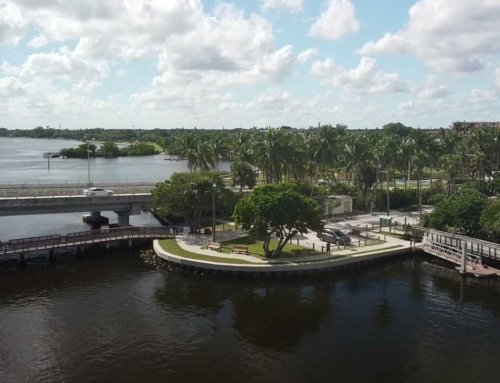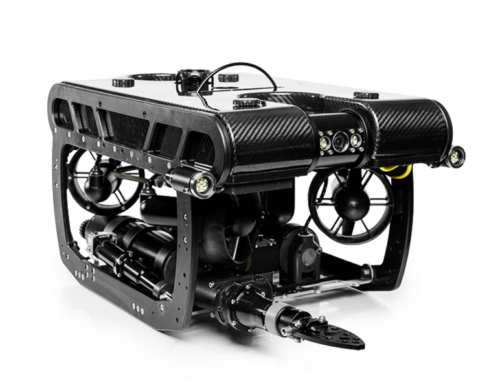Dive into the Wonders of Coral Reefs: A Journey from Virtual Exploration to Manned Submersibles
Coral reefs are one of the most fascinating and diverse ecosystems in the world. They are home to an incredible array of marine life, from colorful fish and giant clams to sea turtles and sharks. But these incredible underwater worlds are also incredibly fragile, and they face a range of threats from climate change and human activity. As such, there has never been a more important time to explore and learn about coral reefs, and to do everything we can to protect them.
Introduction to Coral Heads:
Coral reefs are truly a marvel of nature, offering a glimpse into an underwater world that is both captivating and mysterious. With their vibrant colors and unique ecosystems, these habitats have captured the imagination of people around the world for generations. The exploration and study of coral reefs have never been more important, given the threats that they face from human activities such as overfishing, pollution, and climate change.
Whether you’re a curious learner or an experienced explorer, there are many ways to experience the magic of coral reefs. From virtual exploration to up-close encounters through snorkeling, diving, and submersibles, there’s no shortage of ways to get up close and personal with these incredible habitats. As we dive into the different methods of exploring coral reefs, you’ll discover the beauty and wonder of this incredible ecosystem and the importance of protecting it for generations to come.
Virtual Exploration:
Virtual exploration is an excellent option for those who want to learn about coral reefs without actually venturing out into the ocean. It’s a great way to get a feel for what it’s like to explore these incredible ecosystems, and there’s no shortage of resources available on the internet. CoralHeads.com, for example, is an excellent starting point, offering links to a wide variety of websites, photo galleries, and videos that provide information on coral reefs from around the world.
Through virtual exploration, you can discover the many different types of coral reefs, learn about the plants and animals that call them home, and gain a deeper understanding of the importance of these habitats. You can also learn about the various threats that coral reefs face, such as overfishing, pollution, and climate change, and what can be done to protect them.
One of the advantages of virtual exploration is that it allows you to access information and resources that might be difficult or impossible to access in person. For example, you can watch high-quality videos of coral reefs that have yet to be documented on video. You can also take virtual tours of coral reefs around the world, from the Great Barrier Reef in Australia to the coral reefs of the Caribbean.
Overall, virtual exploration is an excellent starting point for anyone interested in coral reefs, providing a wealth of information and resources that can help you develop a deeper appreciation and understanding of these incredible ecosystems.
Video Documentation:
Video documentation is an incredible way to immerse yourself in the beauty of coral reefs. With the help of cutting-edge underwater cameras and drones, filmmakers and researchers are capturing some of the most stunning footage of these underwater worlds. From the vibrant colors and intricate patterns of the coral to the vast diversity of marine life that call the reefs home, these videos offer a glimpse into a world that is often hidden from view.
In addition to their beauty, these videos also serve an important purpose. By documenting the reefs, scientists and researchers can better understand and track changes in the ecosystem over time. They can use this information to monitor the health of the reefs and identify areas in need of protection and conservation.
If you’re interested in exploring coral reefs through video documentation, there are many incredible videos available online. These videos range from short, informative clips to full-length documentaries, and cover a wide range of topics, from the biology of coral to the threats facing these fragile ecosystems. Whether you’re a student, a researcher, or simply someone who loves marine life, video documentation offers a fascinating way to explore coral reefs.
Saltwater Coral Reef Aquariums:
Saltwater coral reef aquariums offer a unique opportunity to observe the beauty of coral reefs up close and personal. These aquariums not only provide an attractive addition to your home or office but also serve as a window into the diverse and fascinating world of corals. Advances in technology and equipment have made it possible to recreate a miniature version of a coral reef ecosystem in a controlled environment.
These aquariums require careful monitoring and maintenance to create an environment that mimics the natural conditions of a coral reef. With the right combination of water chemistry, lighting, and filtration, you can successfully cultivate a thriving coral reef aquarium. Saltwater coral reef aquariums also serve as an important platform for research and experimentation. Marine biologists use them to study the behavior, growth, and reproduction of corals in a controlled environment, which can provide valuable insights into the health and sustainability of natural coral reefs.
One of the most exciting aspects of having a saltwater coral reef aquarium is the ability to observe the fascinating behaviors of corals. From the way they feed and grow to their unique defense mechanisms, there’s always something new and exciting to learn about these amazing creatures. Coral reef aquariums also provide a great opportunity for education and outreach, as they can inspire a love and appreciation for marine life in people of all ages.
Overall, saltwater coral reef aquariums offer a unique and rewarding way to experience the beauty and wonder of coral reefs. With careful planning and attention to detail, you can create a stunning and thriving miniature coral reef ecosystem right in your own home.
Snorkeling/Freediving/Scuba Diving:
Snorkeling, freediving, and scuba diving are some of the most exhilarating ways to explore coral reefs. With a mask, snorkel, and fins, you can float on the surface and peer down into the shallow waters to witness the beauty of the reef. Freediving allows you to dive deeper without the use of scuba gear, relying solely on your breath-holding ability. And if you’re ready to take your exploration to the next level, scuba diving provides the opportunity to fully immerse yourself in the underwater world.
Scuba diving requires certification, training, and the proper equipment, but it allows you to dive deeper and stay underwater for longer periods of time. You can explore the nooks and crannies of the reef and encounter unique creatures like octopuses, sea turtles, and reef sharks. It’s a truly unforgettable experience that will leave you with a newfound appreciation for the ocean and its inhabitants.
One thing to keep in mind when snorkeling, freediving, or scuba diving in coral reefs is the importance of responsible and sustainable tourism. Coral reefs are delicate ecosystems that are easily damaged by human activity, so it’s important to follow guidelines and regulations to minimize your impact on the environment. Additionally, supporting eco-friendly diving and snorkeling operations can help protect and preserve coral reefs for future generations to enjoy.
Underwater Drones/ROVs:
Underwater drones and ROVs are cutting-edge technologies that provide a whole new level of exploration and discovery of the ocean’s depths. These vehicles allow researchers to explore and map uncharted territories of the coral reef ecosystem that are impossible to reach with traditional diving methods. The best part is, you can control these drones and ROVs from the comfort of a ship, or even on land, as long as you have a reliable internet connection.
Underwater drones and ROVs are equipped with high-tech cameras and other sensors that enable them to capture detailed imagery of the coral reefs and their inhabitants. This imagery is then analyzed by marine biologists to study the biodiversity of the reef, the coral’s health, and the presence of invasive species. The vehicles can also be used to collect samples and data that are crucial for further scientific research.
In addition to research purposes, underwater drones and ROVs are also used for exploration and photography by underwater enthusiasts. These devices can capture stunning images and footage of the coral reef ecosystem that are not visible to the naked eye. Moreover, they can be operated in all weather conditions, which means you can explore the reef even in harsh weather conditions or when the water is too dangerous for human divers.
Underwater drones and ROVs are an incredible tool for exploring the wonders of the coral reef ecosystem. They allow us to discover and study the depths of the ocean, which were previously inaccessible to us. With these technologies, we can learn more about this mysterious and fascinating ecosystem, which in turn helps us to protect and conserve it for future generations.
Submersibles/Submarines:
Submersibles and submarines offer a truly unparalleled experience for exploring the wonders of coral reefs. These vehicles provide the opportunity to explore the deepest, most remote, and inaccessible parts of the ocean, which would be otherwise impossible to explore. Unlike other exploration methods, manned submersibles and submarines can take you to depths of thousands of meters, allowing you to observe coral reefs in their natural habitat, without disturbing the ecosystem.
One of the companies that offer access to these submersibles is Triton Submarines, which provides customized submersibles for individual use or for scientific research. The vehicles are designed to withstand the extreme pressures of the deep sea and are equipped with advanced technology, including high-definition cameras, specialized lighting, and communication systems. The pilots of these submersibles are highly trained, ensuring a safe and unforgettable journey through the depths of the ocean.
The experience of exploring coral reefs in a submersible is truly one-of-a-kind. You’ll be able to observe the vibrant colors and shapes of the corals up close, as well as the diverse and fascinating marine life that inhabits these reefs. You’ll also have the opportunity to witness unique geological formations and underwater landscapes that are not visible from the surface.
Manned submersibles and submarines are often used for scientific research and exploration, as they can provide an unprecedented level of access and insight into the world of coral reefs. They are equipped with scientific instruments and sensors, allowing researchers to collect data and samples from the ocean floor. This information can be used to better understand the biology, ecology, and geology of coral reefs, and to develop strategies for their conservation and protection.
If you’re looking for the ultimate adventure in coral reef exploration, a manned submersible or submarine is the way to go. Whether you’re an adventurer or a scientist, these vehicles offer a unique and unforgettable way to experience the beauty and mystery of coral reefs in their natural habitat.
3D Multibeam Imaging and Scanning Sonars:
3D multibeam imaging and scanning sonars are powerful tools used in coral reef exploration and research. They provide a detailed view of the seafloor, allowing researchers to create accurate maps of the coral reefs and their surrounding areas. These maps can be used to study the geological features of the reef, identify potential habitats for various marine species, and track changes in the reef over time.
The technology works by emitting a series of sound waves that bounce off objects in the ocean. The sonar system then measures the time it takes for these sound waves to return, creating a detailed map of the seafloor. This mapping process can be done from a stationary vessel or from a moving platform, such as a remotely operated vehicle.
The 3D multibeam imaging and scanning sonars are also useful for studying the behavior and movement patterns of marine organisms in the ocean. By using this technology, researchers can track the movement of fish and other creatures in real-time and study their behaviors and habits. This information can be used to better understand the complex relationships between different marine species and the coral reef ecosystem as a whole.
Overall, 3D multibeam imaging and scanning sonars are a valuable tool for coral reef exploration and research. They provide a detailed view of the seafloor and marine organisms, helping researchers gain a better understanding of the complex relationships that exist within coral reef ecosystems.
Eco-tourism:
Eco-tourism has become an increasingly popular way to explore coral reefs and other natural wonders while minimizing negative environmental impacts. By choosing sustainable travel options and supporting local conservation efforts, eco-tourists can enjoy their adventures while helping to protect these fragile ecosystems.
At Coral Heads, we are passionate about eco-tourism and are dedicated to helping our members plan the ultimate coral reef adventure. Our team is experienced in creating customized travel packages that incorporate various ways to explore coral reefs, including virtual exploration, video documentation, aquariums, diving, underwater drones, submersibles, and 3D imaging.
We work with reputable eco-tourism providers to ensure that our members have access to sustainable travel options that support local communities and conservation efforts. Our team also provides resources and information on responsible tourism practices, so our members can make informed decisions when planning their trips.
Whether you’re interested in a relaxing snorkeling trip or an adrenaline-filled submersible adventure, Coral Heads can help you plan an eco-friendly and unforgettable coral reef experience.
In Conclusion:
Coral reefs are one of the most incredible ecosystems on our planet, and there are countless ways to explore and discover their wonders. Whether you prefer to start your journey by learning about them virtually or diving right in, there is an option for everyone.
If you’re unable to travel to a coral reef location, virtual exploration is an excellent way to start your journey. Through websites, photo galleries, and videos on platforms such as YouTube, you can learn about coral reefs without leaving your home.
If you’re interested in seeing coral reefs up close, saltwater coral reef aquariums offer a controlled environment to observe the growth and behavior of corals. They also serve as a great research platform for scientists and hobbyists.
If you want to dive into the depths of coral reefs and experience them up close, snorkeling, freediving, and scuba diving are great options. You can explore the vibrant colors, shapes, and creatures of coral reefs while diving.
For those who want to explore deeper waters, underwater drones and ROVs offer the opportunity to explore and study the deep sea without leaving the surface. They are also useful for mapping and documenting coral reefs in hard-to-reach areas.
If you’re looking for the ultimate coral reef exploration experience, manned submersibles and submarines can take you to the depths of the ocean, allowing you to explore the most remote and inaccessible areas of coral reefs.
Finally, eco-tourism is a fantastic way to combine all of these opportunities to explore coral reefs. Coral Heads is at the forefront of this growing industry, and they can help you plan the ultimate coral reef adventure.
There are endless possibilities for exploring coral reefs. With the growth of eco-tourism and advancements in technology, it’s easier than ever to turn your dream of discovering the magic of coral reefs into a reality. So what are you waiting for? Start exploring today!




